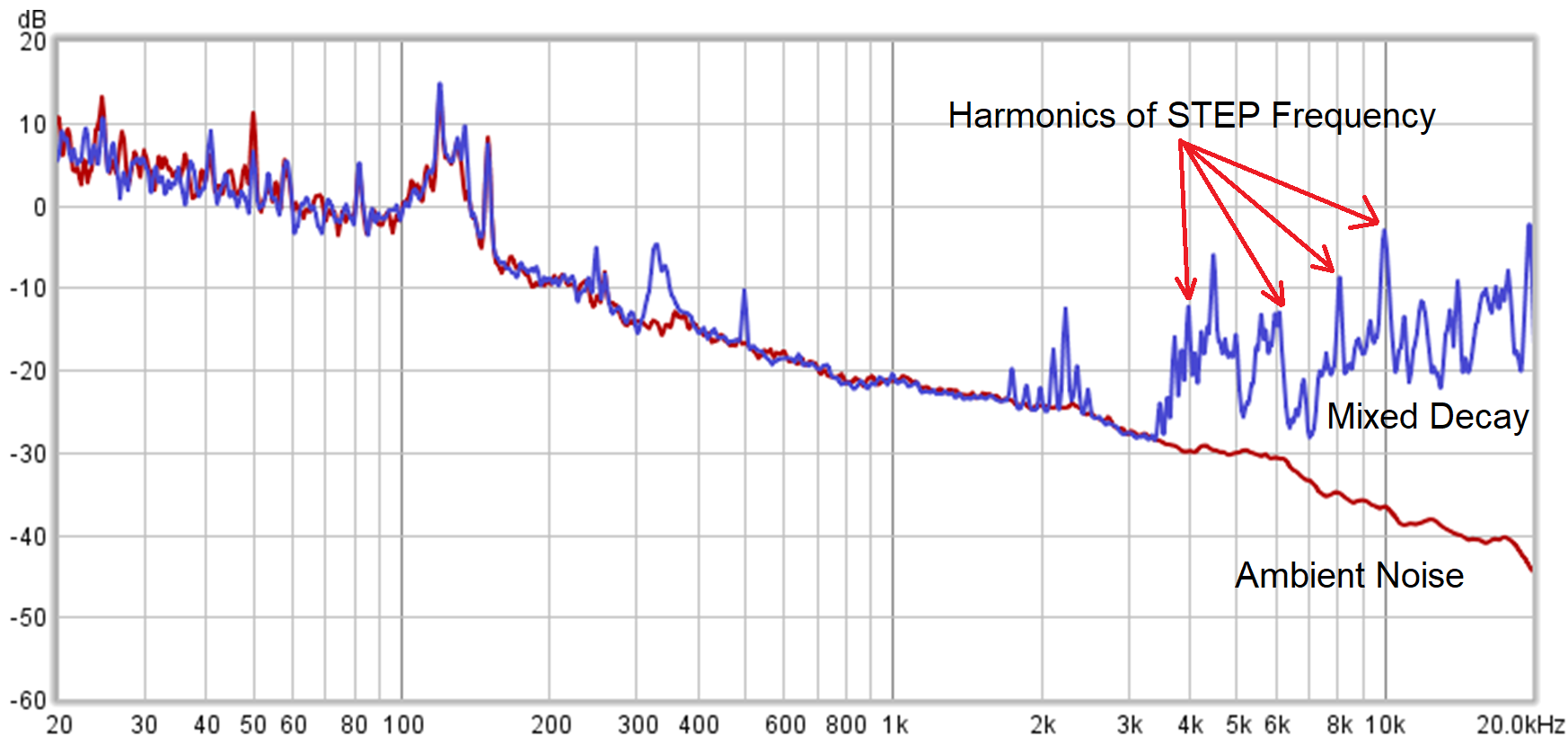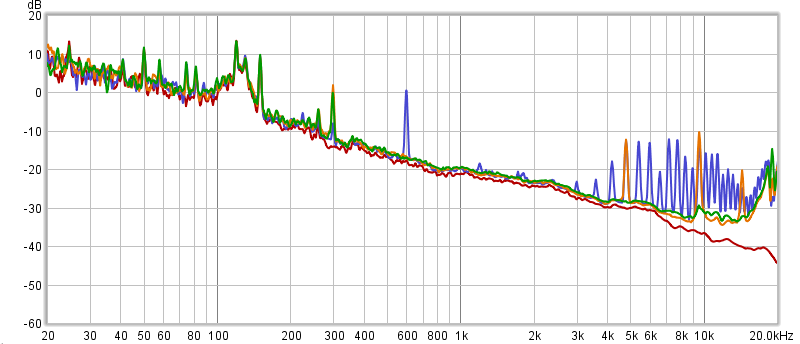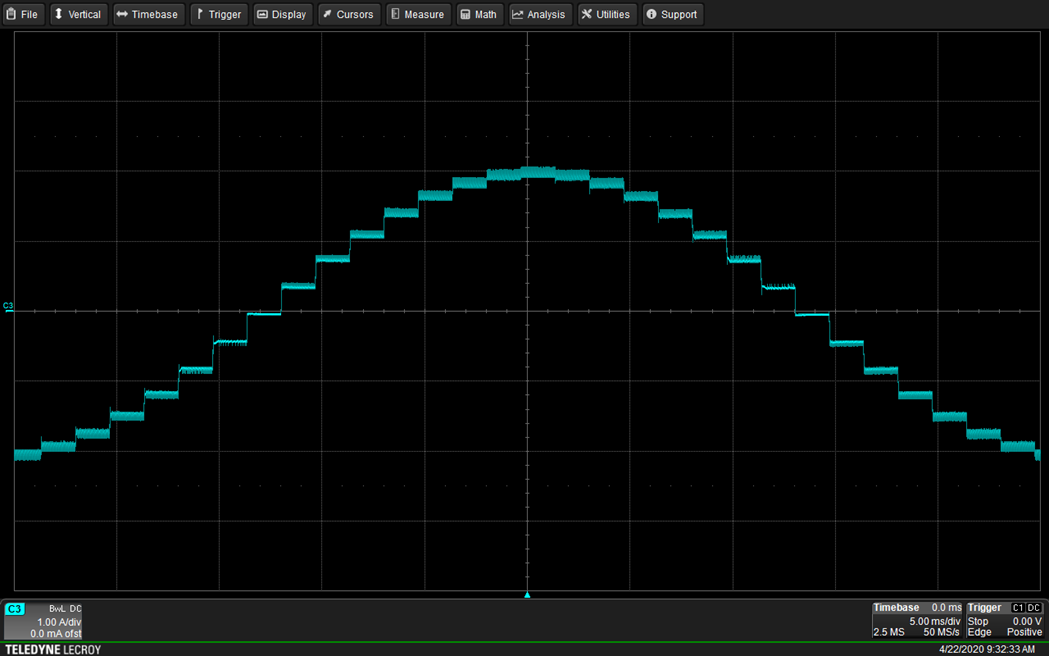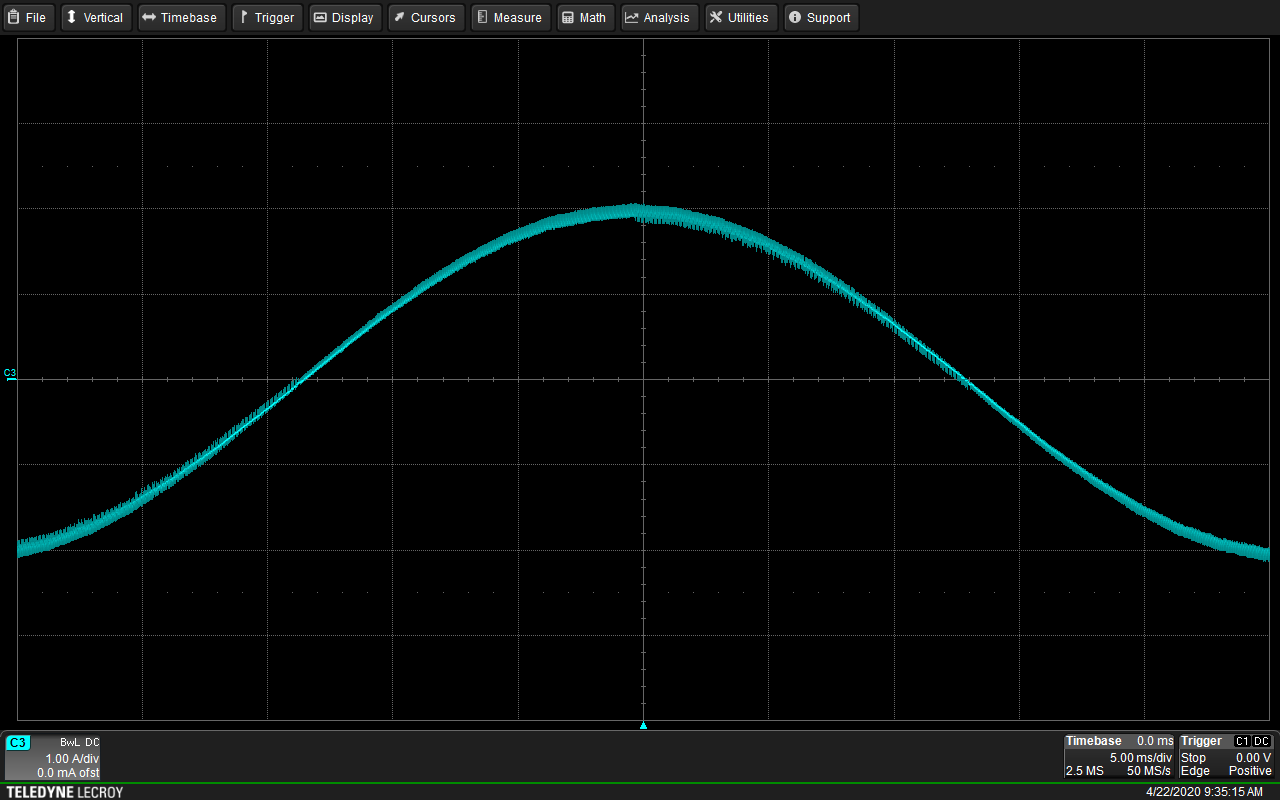SLVAES8 May 2020 DRV8424 , DRV8424E , DRV8426 , DRV8428 , DRV8428E , DRV8434 , DRV8434E , DRV8434S , DRV8436 , DRV8436E , DRV8889-Q1
3.3.4 Effects of Step Resolution and Step Frequency
Low-resolution step modes, like full or half stepping introduce a lot of vibrations that propagate throughout the entire structure of the stepper motor, especially at low speeds. When the driver commands a new step, similar to a pulse response, the rotor overshoots and oscillates around the next position, leading to mechanical vibrations and noise.
To reduce these oscillations, modern stepper drivers employ microstepping to divide one full step into smaller microsteps. This positions the rotor in intermediate positions in between two subsequent full steps. As a result, the rotor is now stepped in much smaller angles, or smaller distances. When switching to a new position, the over- and under-shoots are drastically reduced.
The step frequency appears as a large spike in the SPL plot of a stepper motor. In addition, harmonics of the step frequency continue to occur throughout the spectrum. If the step frequency is between 20Hz and 20 kHz, then the step frequency and all the higher harmonics will appear in the audible range, as shown in Figure 20 for mixed decay with 2 kHz step frequency and 1/4 microstepping.
 Figure 20. SPL Plot for 1/4 Microstepping, Mixed Decay, Step Frequency = 2000 pps (pulses per second)
Figure 20. SPL Plot for 1/4 Microstepping, Mixed Decay, Step Frequency = 2000 pps (pulses per second) One trick to reduce audible noise is by increasing the microstepping level and step frequency together, while maintaining the same motor speed. By selecting a microstepping level which places the step frequency beyond the audio band, quiet motor operation can be achieved. Most of the drivers listed in Table 1 enable this by allowing to increase the microstepping to 1/256, much more than traditional stepper motor drivers.
Figure 21 compares the SPL plots at 1/8 (blue trace), 1/64 (orange trace) and 1/256 (green trace) microstep. The step frequency was 600 pps, 4800 pps and 19200 pps respectively. Microstepping at 1/256 (green) has the best audio performance, and 1/8 (blue) has the worst. At 1/8 steps, there is a clear whining sound. When the microstep is increased to 1/64, the sound softened, but is still audible. When microstep is increased to 1/256 microstep, the sounds vanish and only white noise remains. By increasing the microstep frequency beyond the audible range, the audio nose is reduced and at the same time overall smoother rotation is achieved.
 Figure 21. SPL Plots at Various Microstepping Levels
Figure 21. SPL Plots at Various Microstepping Levels The current waveform at 1/8 microstepping is shown in Figure 22 and at 1/256 microstepping is shown in Figure 23. They show how the current waveform becomes more ideal as microstepping increases.
 Figure 22. Current Waveform With 1/8 Microstepping, Smart Tune Ripple Control
Figure 22. Current Waveform With 1/8 Microstepping, Smart Tune Ripple Control
 Figure 23. Current Waveform With 1/256 Microstepping, Smart Tune Ripple Control
Figure 23. Current Waveform With 1/256 Microstepping, Smart Tune Ripple Control
Typical microcontrollers used in stepper motor applications can easily support step frequencies of 20,000 pps. However, high step frequency also means that the driver needs more microcontroller resources to drive the motor. Therefore, it is not necessary to increase the microstepping to 1/256 for every application. Microstepping level which just about makes the step frequency higher than 15 kHz will result in quiet enough operation for most practical purposes. When the application is expected to work over a wide range of speeds, varying the microstepping level according to the speed helps achieve noiseless operation over the entire range.
One note of caution though - while higher levels of microstepping increases resolution and reduces audible noise, it does not necessarily increase accuracy. This is because microstepping significantly limits the incremental torque of the motor, which means torque of the microstep might not be enough to actually turn the shaft, and in high torque situations the motor may end up skipping some of the microsteps.